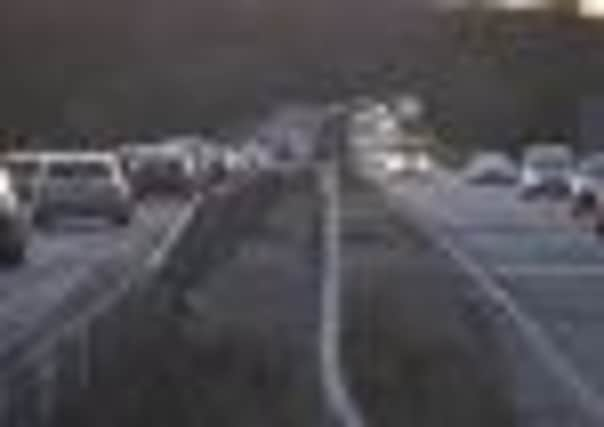Beavers force chopping down of A90 trees at Forfar


The company moved in to fell the trees, within a few yards of the northbound carriageway of the A90 Aberdeen to Dundee road, after being contacted about the potential danger on the Forfar stretch of the carriageway, close to the Dean Water.
It was revealed in December by Scottish Natural Heritage (SNH) that almost 150 rogue beavers - 50 per cent more than previous estimates - are now running wild in the River Tay catchment. The Dean Water was one of the three areas identified as displaying the greatest density of beaver signs and beaver groups.
Advertisement
Hide AdAdvertisement
Hide AdA spokesman for Bear Scotland “We are aware of beavers damaging trees in this area and are working with Transport Scotland and Scottish Natural Heritage to monitor the situation.
“Safety is our number one priority and any trees which have been damaged to the extent that they could impact on the adjacent trunk road have immediately been safely felled. At the same time we are monitoring the remaining trees to ensure any further damage is spotted early and treated accordingly.”
He added: “Transport Scotland and Scottish Natural Heritage are also working together on a proposed trial to protect the trees from the attention of the beavers.”
A spokesman for SNH said: “We’re working with Transport Scotland and its contractor, Bear, who have felled those trees felt to be close to the carriageway. All other trees have been marked and are being monitored. We and Transport Scotland are also committed to trialling tree protection measures in this area. “
He added: “The Environment Minister decided last March to allow beavers in Tayside to remain in the wild until the decision on reintroduction in 2015. In the meantime, the Minister has asked us to monitor and study the Tayside population and not to remove them or reduce their number. If landowners have problems with beavers on their land, we’d ask them to contact us so we and the Tayside Beaver Study Group can look into solutions.
“The Tayside Beaver Study Group, which was set up following the Minister for Environment’s decision to tolerate the Tayside beavers, has a programme to trap animals at sites across Tayside. This is an important step as it allows us to understand individuals’ health status and the population’s genetic makeup. This is one of our study sites, so there is a trap and a camera to monitor it. We are particularly keen that these sites are left alone as far as possible. We’re aware there was significant food storage in this area, but we’re not aware of dam building. We will monitor this.”
The beaver study report, published in December, stated: “The River Earn and rivers in the Isla catchment (particularly Dean Water) exhibited the greatest density of beaver groups while the Rivers Tummel and Tay had the lowest density. In the area occupied by the Dean Water group, there had been gnawing at the base of three large poplar trees growing within a few metres of the A90, although there were no recent signs of gnawing at the same three trees.
“Fresh gnawing has since been observed on a neighbouring poplar. In all four trees, the current extent of gnawing is unlikely to cause felling and since the trees have not been ring-barked they should survive. Further gnawing could however create a potential issue if the trees fall over onto the carriageway.”